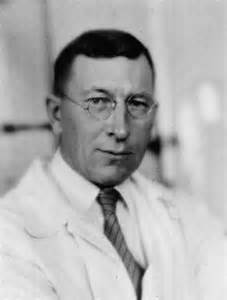On this day in 1925, Sir Frederick Banting delivered his Nobel Prize Lecture, entitled “Diabetes and Insulin,” in Stockholm, Sweden.
According to the Canadian Encyclopedia online, it was on an October night in 1920 that Banting wrote down an idea for research aimed at isolating the long-sought internal secretion of the pancreas. He received support for his proposed research at the University of Toronto, where he began work on May 17, 1921 under the direction of J.J.R. Macleod, assisted by Charles Best.
Banting’s and Best’s experiments were crudely conducted, and included experiments with the pancreases of dogs – and later cows – and did not substantiate Banting’s idea, which was physiologically incorrect. But their apparently favourable results encouraged greater efforts, which culminated in the winter of 1921-22 in the discovery of insulin by a team of researchers that included Macleod, Banting, J.B. Collip and Best.
Insulin was immediately and spectacularly effective as a lifesaving therapy for diabetes mellitus. Banting was hailed as the principal discoverer of insulin because his idea had launched the research, and because of his prominence in the early use of insulin.
On learning that he was to share the 1923 Nobel Prize for physiology or medicine with Macleod, Banting gave half his prize money to Best. He was awarded a life annuity by the federal government, appointed Canada’s first professor of medical research at U of T, and knighted in 1934.
Banting was honoured by Canada Post in 2000 as one of the subjects of the millennium collection of stamps. The 46-cent commemorative depicts Banting and one of the ‘diabetic’ dogs, along with a hypodermic needle, representing the insulin that has gone on to save millions from death since its discovery 90-plus years ago.


